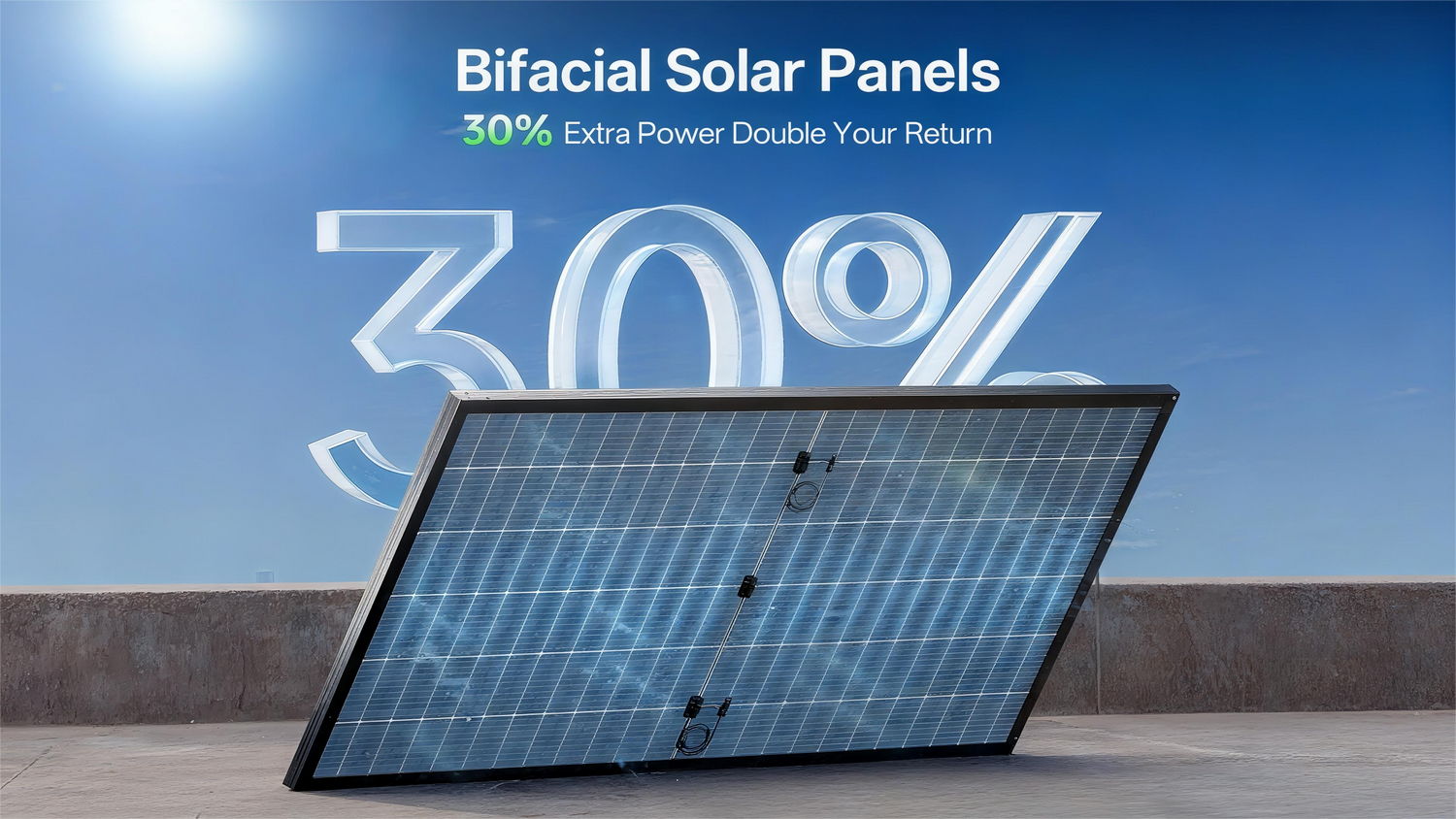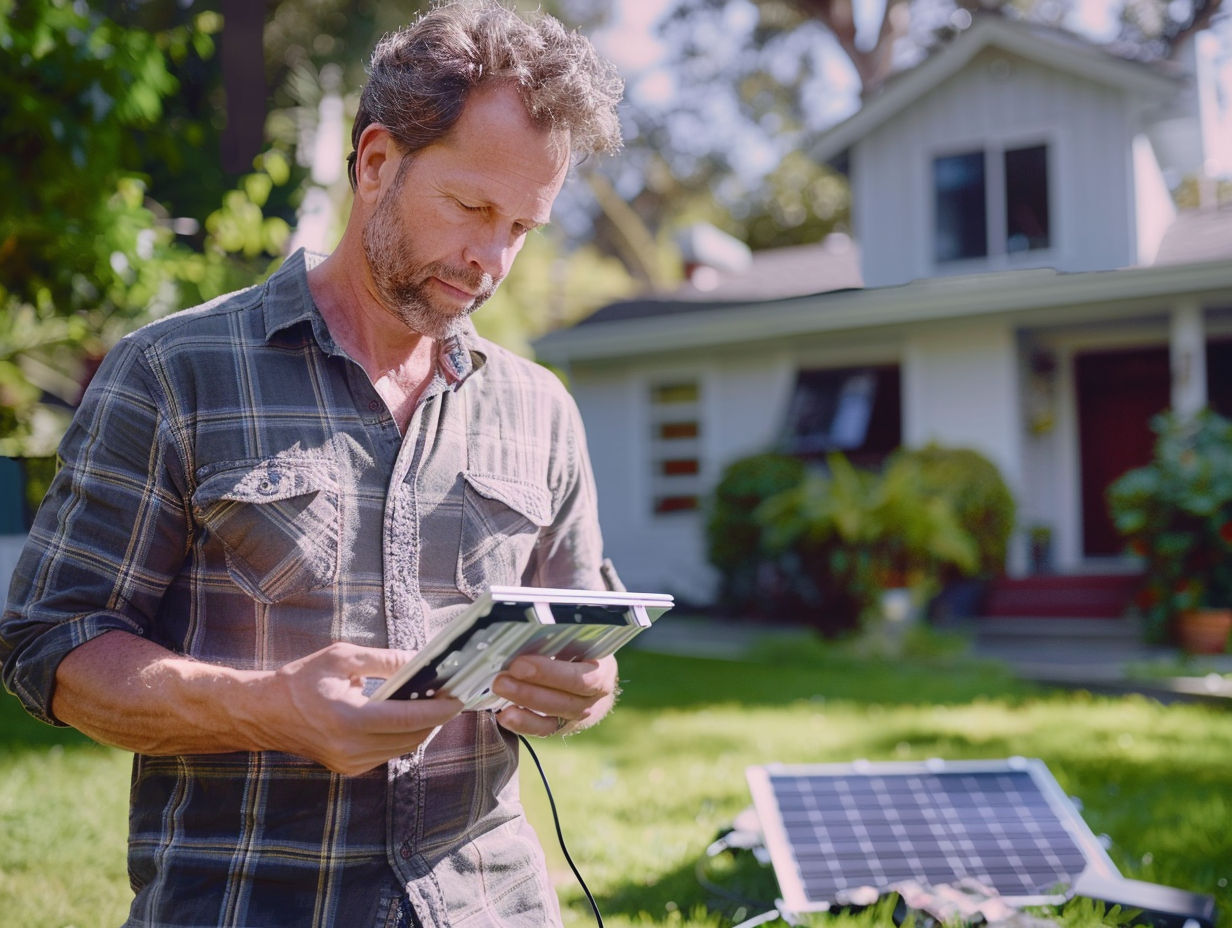If you've recently invested in solar panels, you might have noticed something puzzling: the actual power output often falls short of the advertised nameplate power (the maximum power rating under ideal conditions). This isn't necessarily a sign of a faulty product. In fact, it's perfectly normal for solar panels to operate below their nameplate rating in real-world scenarios. Understanding the reasons behind this can help you set realistic expectations and maximize your system's efficiency.

Here’s a detailed look at the key factors affecting your solar panel's output:
- Environmental and Light Conditions:Solar panels are tested in laboratory conditions under a standardized light intensity of 1000 watts per square meter (equivalent to bright, direct sunlight at solar noon) . However, sunlight intensity varies significantly throughout the day and across seasons.
- Time of Day & Season: Output is lower in the early morning, late afternoon, and during winter months when the sun is lower in the sky.
- Weather: Cloud cover, haze, and pollution can dramatically reduce the amount of sunlight reaching your panels, leading to lower power generation.
- Temperature Effects:Solar panel performance is inversely related to temperature. They are tested at a cool 25°C (77°F), but on a sunny day, their surface temperature can easily reach 60°C (140°F) or higher .
- Power Loss: In high temperatures, panels can experience power losses of 10% to 15% below their nameplate rating, even under otherwise good sunlight . This is due to the temperature coefficient of the panels, a spec listed on the datasheet.
- Shading and Dirt: Solar panels are extremely sensitive to shading. Even a small shadow from a chimney, tree branch, or debris falling on just *one cell* can disproportionately reduce the output of an entire panel or string of panels .
- Dust and Grime: Accumulation of dust, pollen, bird droppings, and other grime on the glass surface acts as a barrier, blocking sunlight from reaching the cells. Regular cleaning is essential to maintain output .
- Installation Angle and Orientation: The angle and direction your panels face are critical. Lab tests assume panels are positioned perfectly perpendicular to the sun's rays.
- Non-Optimal Angles: If your roof pitch isn't ideal or your panels are flat-mounted (common on RVs), they won't be at the optimal angle for most of the day, which can result in power losses of 5% to 15%.
- System Components and Electronics: The journey from sunlight to usable electricity in your home involves several components, each with its own efficiency rating.
- Charge Controller Efficiency: The power from your panels goes through a charge controller. There are two main types:
- PWM (Pulse Width Modulation): Simpler and cheaper, but less efficient. They often force the panel to operate at a non-optimal voltage, especially when charging batteries, which can lead to significant power losses.
- MPPT (Maximum Power Point Tracking): More advanced and efficient but expensive. They actively work to keep your panels operating at their ideal voltage and current, extracting significantly more power, especially in non-ideal conditions .
- Inverter Efficiency: Your inverter, which converts DC electricity from the panels to AC for your home, also has an efficiency rating (typically 95-98%). A small percentage of power is lost as heat during this conversion.
- Wiring Losses: Long, thin, or low-quality cables create resistance, which leads to power being lost as heat before it even reaches your controller or inverter .
- Charge Controller Efficiency: The power from your panels goes through a charge controller. There are two main types:
- Natural Degradation and Potential Issues: Over time, all solar panels experience a very slow and gradual decrease in output power.
- Normal Degradation: High-quality panels typically degrade at about 0.5% to 0.8% per year. This means a panel rated for 100W today should still output around 92-95W after 10 years.
- Micro-Cracks: Tiny, often invisible cracks in the silicon cells (called micro-cracks) can form due to hail, wind load, or improper handling. These cracks break electrical pathways and reduce output.
- Potential Induced Degradation (PID): This is a performance loss that can occur over time due to voltage differences between the solar cells and other system components. Many modern panels include features to resist PID.

Real-World Output Expectations
So, what can you actually expect? While it's possible to see output at or even slightly above the nameplate rating on a cold, brilliantly sunny day with perfect alignment, it's not the norm. A more common and realistic range for annual average output is 70% to 85% of the nameplate power rating. Temporary drops to 50% or lower during cloudy weather or partial shading are also normal .
What You Can Do to Maximize Output
- Right Component Selection: Choose high-efficiency panels and pair them with an MPPT charge controller, which is more efficient at harvesting available power compared to PWM controllers, especially in non-ideal temperatures or when charging batteries .
- Professional Installation: Ensure your panels are installed with the best possible angle and orientation for your location and that wiring is done with appropriately sized cables to minimize losses .
- Regular Maintenance: Gently clean your panels a few times a year, especially after long dry spells or storms that leave debris. Always follow the manufacturer's cleaning guidelines .
- Monitor Your System: Use system monitoring apps to track your output. This helps you quickly identify and troubleshoot any sudden, unusual drops in performance that might indicate a problem like shading or a component failure .
When to Be Concerned:
If your system's output is consistently and significantly lower than expected (e.g., below 50% of nameplate) even during perfect, bright sunny conditions at noon, and you've ruled out shading and dirt, it might indicate a deeper issue like a faulty panel, inverter, controller, or wiring problem. In this case, contact the installer or manufacturer's technical support .
Conclusion
A solar panel not always operating at its nameplate power isn't a defect—it's a reality of how these systems interact with a dynamic environment. By understanding the factors behind this—from sunlight intensity and temperature to system components and maintenance—you can make informed decisions to ensure your solar investment performs at its optimal potential for years to come.
Ready to maximize your solar output? Explore our range of high-efficiency panels, advanced MPPT charge controllers, and complete installation kits designed to work together seamlessly and deliver the best possible return on your energy investment.




